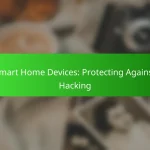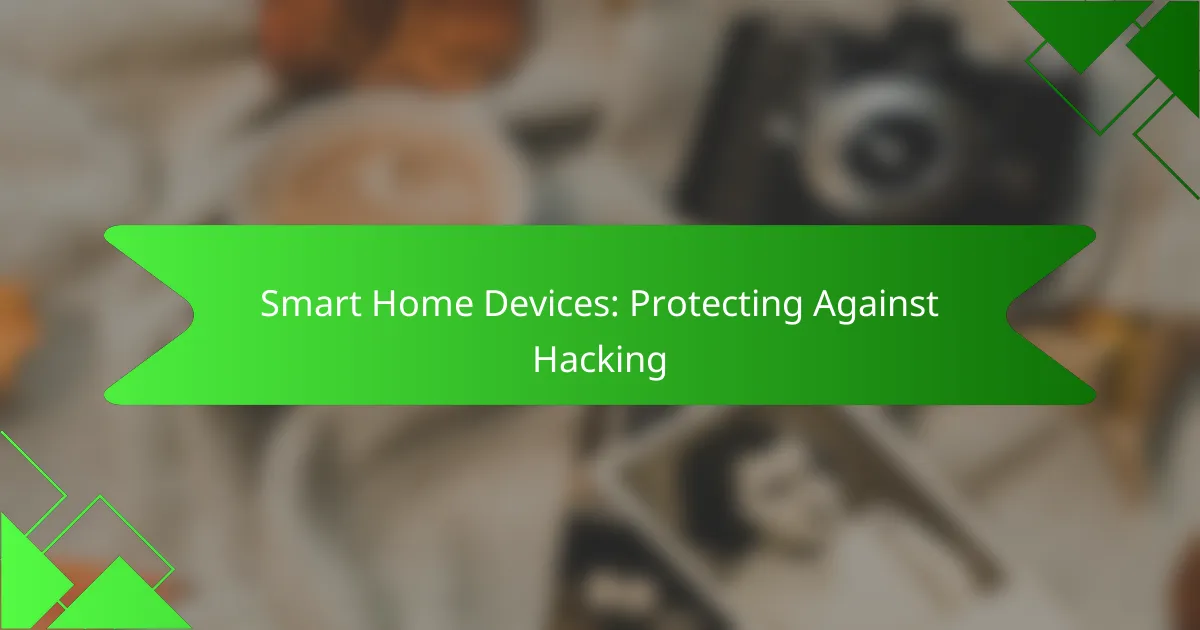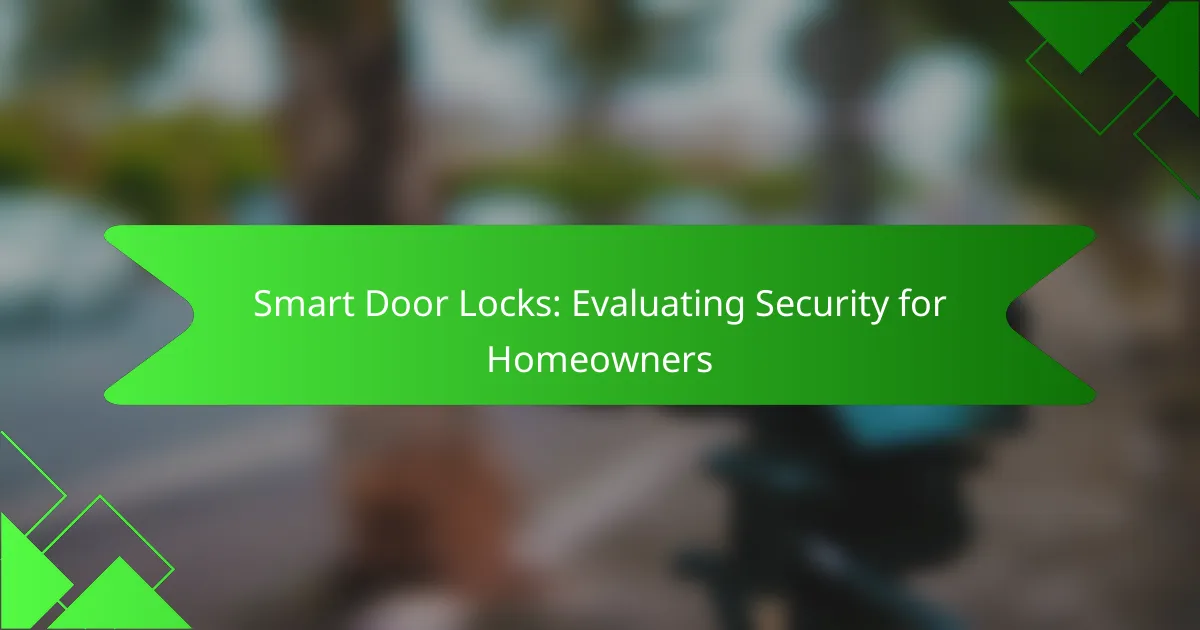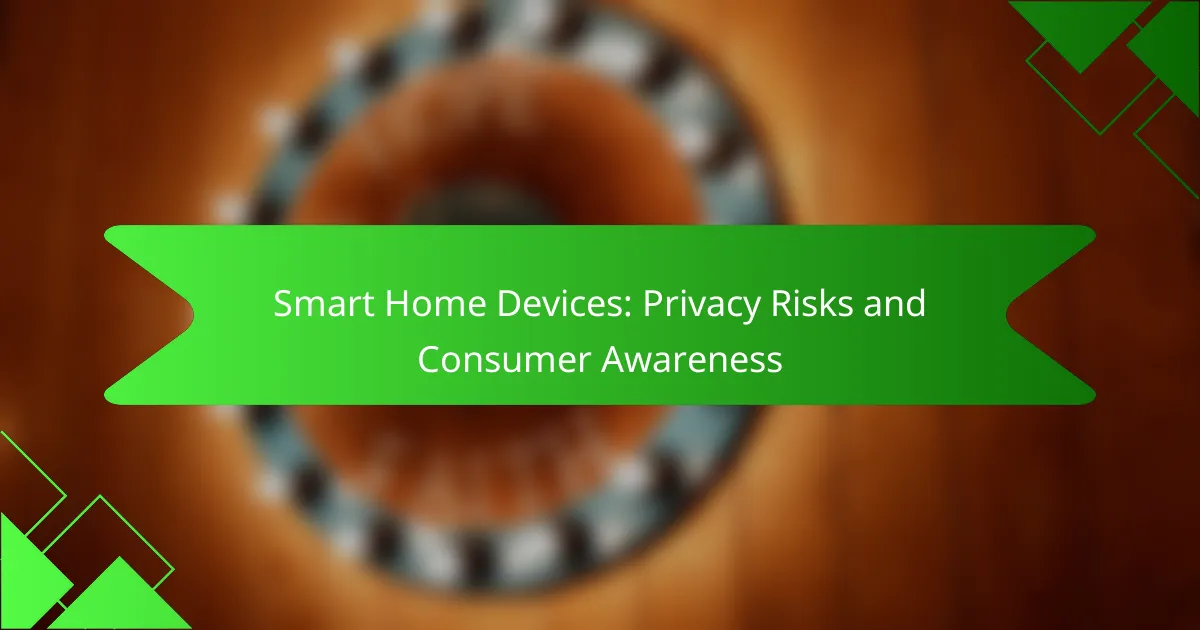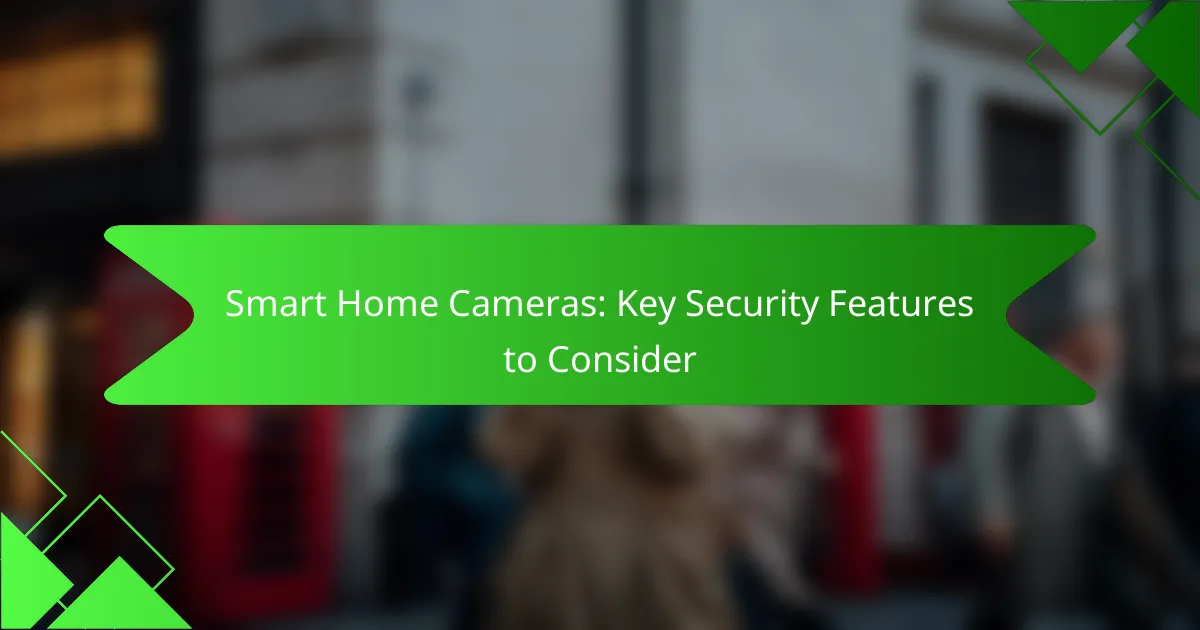Securing your smart home network is vital to safeguard your devices from a range of cyber threats, including unauthorized access and malware attacks. By implementing strong passwords, enabling two-factor authentication, and regularly updating firmware, you can significantly enhance your network’s security. Understanding the vulnerabilities of devices like smart cameras and locks is also essential for protecting your personal information and ensuring a safe smart home environment.
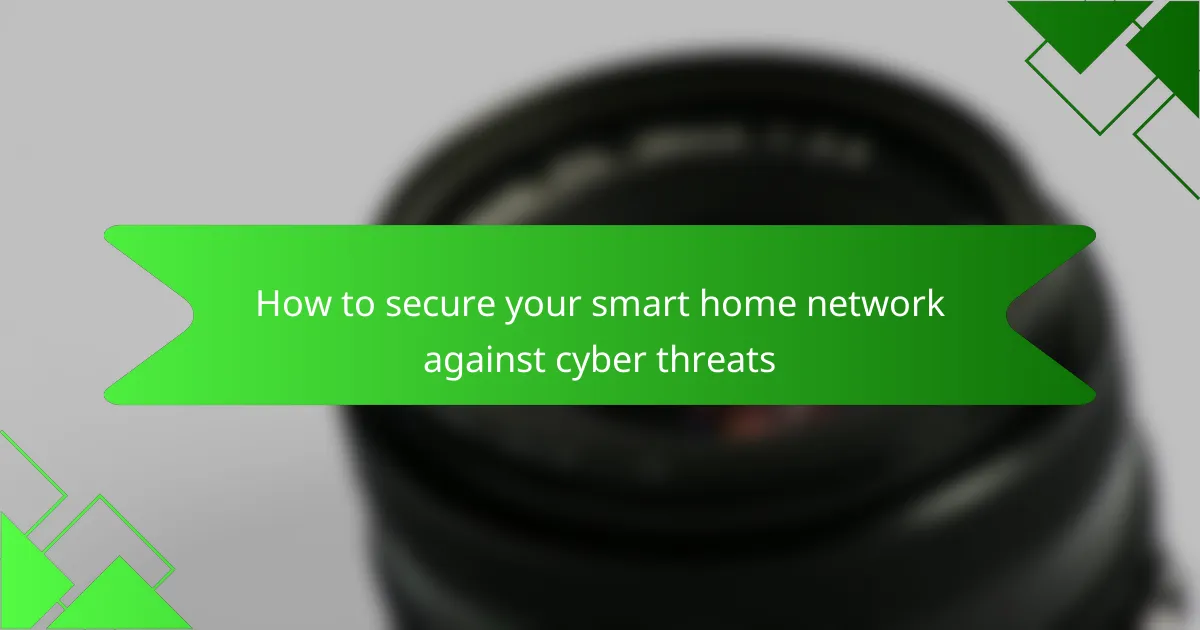
How to secure your smart home network against cyber threats
Securing your smart home network is essential to protect your devices from cyber threats. Implementing strong passwords, enabling two-factor authentication, and keeping firmware updated are key steps to enhance your network’s security.
Use strong, unique passwords
Creating strong, unique passwords for each device on your smart home network is crucial. A good password should be at least 12 characters long and include a mix of letters, numbers, and symbols. Avoid using easily guessable information like birthdays or common words.
Consider using a password manager to generate and store complex passwords securely. This way, you can maintain unique passwords without the hassle of remembering each one.
Enable two-factor authentication
Two-factor authentication (2FA) adds an extra layer of security by requiring a second form of verification beyond just a password. This could be a text message code, an email confirmation, or an authentication app notification.
Enabling 2FA on your smart devices and accounts can significantly reduce the risk of unauthorized access. Always opt for 2FA wherever it is available to enhance your security posture.
Regularly update device firmware
Keeping your smart home devices updated with the latest firmware is essential for security. Manufacturers often release updates to patch vulnerabilities and improve functionality. Check for updates regularly, ideally on a monthly basis.
Many devices allow for automatic updates, which can simplify this process. Ensure this feature is enabled to protect against known security flaws without manual intervention.
Utilize a VPN for remote access
A Virtual Private Network (VPN) encrypts your internet connection, making it more secure when accessing your smart home devices remotely. This is particularly important when using public Wi-Fi networks, which are often less secure.
Choose a reputable VPN service that does not log your activity. This will help protect your data and maintain your privacy while accessing your smart home network from outside your home.
Implement network segmentation
Network segmentation involves dividing your home network into separate segments for different types of devices. For instance, keep smart home devices on one network and computers or smartphones on another. This limits the potential damage if one segment is compromised.
Many routers offer guest network options, which can be used for smart devices. This adds an additional layer of security by isolating them from your primary network where sensitive data is stored.
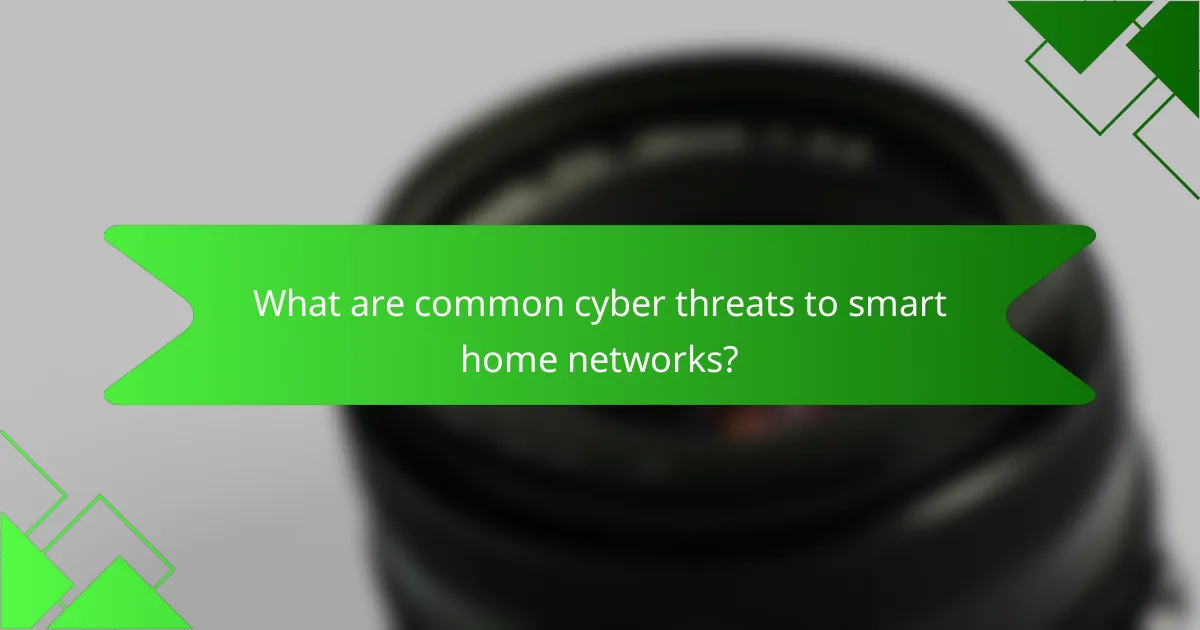
What are common cyber threats to smart home networks?
Common cyber threats to smart home networks include unauthorized access, malware attacks, DDoS attacks, and data breaches. Understanding these threats is crucial for implementing effective security measures to protect your devices and personal information.
Unauthorized access
Unauthorized access occurs when an individual gains entry to your smart home network without permission. This can happen through weak passwords, unpatched vulnerabilities, or unsecured devices. To prevent this, use strong, unique passwords for each device and enable two-factor authentication where available.
Regularly update the firmware of your devices to close security gaps and limit access to your network by disabling features like remote access if not needed. Monitoring connected devices can also help identify any unauthorized users quickly.
Malware attacks
Malware attacks involve malicious software designed to infiltrate your smart home devices, often leading to data theft or device malfunction. These attacks can originate from infected apps or phishing emails that trick users into downloading harmful software. Always download apps from reputable sources and be cautious of unsolicited links.
To mitigate the risk of malware, install antivirus software on your devices and keep it updated. Regularly scan your network for unusual activity and consider using a separate network for smart devices to isolate them from your main devices.
DDoS attacks
DDoS (Distributed Denial of Service) attacks overwhelm your smart home network with excessive traffic, rendering devices unusable. These attacks can disrupt services and compromise the functionality of your smart home systems. Protecting against DDoS attacks involves using a firewall and monitoring traffic patterns for anomalies.
Consider employing a Virtual Private Network (VPN) to add an extra layer of security and reduce the risk of DDoS attacks. Additionally, keeping your devices updated can help them withstand such attacks more effectively.
Data breaches
Data breaches occur when sensitive information from your smart home devices is accessed or stolen by cybercriminals. This can include personal data, passwords, or even video feeds from security cameras. To prevent data breaches, ensure that all devices are secured with strong passwords and encryption.
Regularly review privacy settings on your devices and limit the amount of personal information shared online. Utilizing services that offer end-to-end encryption can further protect your data from unauthorized access.

Which devices are most vulnerable in smart home setups?
Smart home setups often include devices that can be particularly vulnerable to cyber threats. The most at-risk devices typically include smart cameras, speakers, thermostats, and locks, each with unique security challenges that users should address.
Smart cameras
Smart cameras are popular for home security but can be easy targets for hackers if not properly secured. They often connect to Wi-Fi networks and may have weak default passwords or outdated firmware, making them susceptible to unauthorized access.
To enhance security, regularly update the camera’s firmware and change default passwords to strong, unique ones. Consider disabling remote access if it’s not needed, and use a separate network for smart devices to limit exposure.
Smart speakers
Smart speakers, like Amazon Echo or Google Home, can be vulnerable due to their always-on listening capability. They may inadvertently record conversations or be manipulated to access personal information if security settings are not configured correctly.
To protect your privacy, adjust the settings to limit data sharing and regularly review voice recordings. Mute the microphone when not in use, and ensure the speaker is connected to a secure network.
Smart thermostats
Smart thermostats control heating and cooling systems, but they can be exploited if not secured. Attackers may gain access to your home network through these devices, potentially manipulating temperature settings or accessing other connected systems.
Secure your thermostat by changing default passwords and ensuring it uses encryption for data transmission. Regularly check for firmware updates and consider using a dedicated network for your smart home devices.
Smart locks
Smart locks provide convenience but can pose significant security risks if compromised. They rely on wireless communication, which can be intercepted, allowing unauthorized access to your home.
To enhance the security of smart locks, choose models that offer robust encryption and two-factor authentication. Regularly update the lock’s software and avoid using easily guessable codes or passwords.
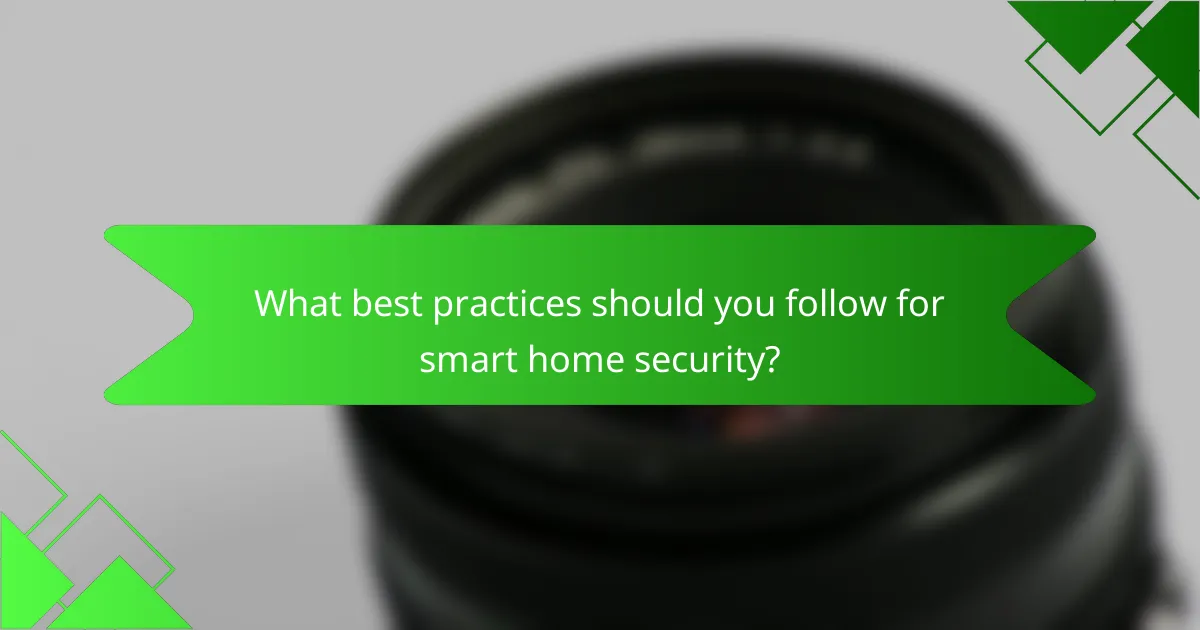
What best practices should you follow for smart home security?
To enhance smart home security, it is essential to implement best practices that protect your network from cyber threats. Key strategies include regularly auditing connected devices and disabling unused features to minimize vulnerabilities.
Regularly audit connected devices
Conducting regular audits of your connected devices helps identify any unauthorized or outdated equipment on your network. This practice ensures that only secure, necessary devices are active, reducing potential entry points for cyber attacks.
Start by creating a list of all connected devices, including smart speakers, cameras, and appliances. Check for firmware updates and remove any devices that are no longer in use. Aim to perform this audit at least quarterly to maintain a secure environment.
Disable unused features
Disabling unused features on your smart devices can significantly reduce their attack surface. Many devices come with default settings that include features you may not need, which can be exploited by cybercriminals.
Review the settings of each device and turn off features such as remote access, voice assistants, or cloud storage if they are unnecessary. This simple action can help protect your personal information and reduce the risk of unauthorized access.
